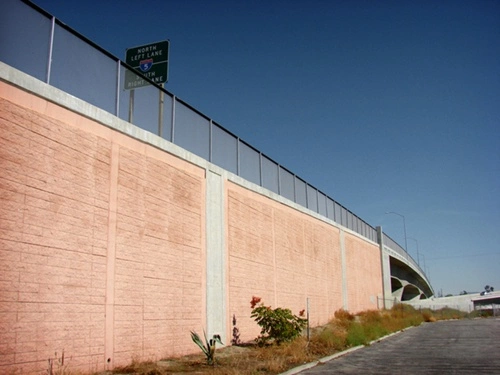
It is Christmas in July for eminent domain practitioners! We have a California Supreme Court opinion on a condemnation case, which is rare. The case, Weiss v. People ex rel. Department of Transportation (2020 Cal. LEXIS 4357), is an inverse condemnation action where the main question is this: Can you make a Code of Civil Procedure Section 1260.040 motion, also known as a Legal Issues Motion, in an inverse condemnation action? According to the Supreme Court, the answer is no, these motions are meant to address valuation issues in eminent domain actions -- not determine liability in an inverse condemnation action. Before jumping into the specifics of the case, let's get a quick refresher on Legal Issues Motions.
Background on Code of Civil Procedure Section 1260.040 Motions
Section 1260.040 is within the Eminent Domain Law section of the Code of Civil Procedure (sections 1230.010 – 1273.050) and states, in part:
(a) If there is a dispute between plaintiff and defendant over an evidentiary or other legal issue affecting the determination of compensation, either party may move the court for a ruling on the issue. The motion shall be made not later than 60 days before commencement of trial on the issue of compensation. The motion shall be heard by the judge assigned for trial of the case.
In eminent domain actions, either party can bring a legal issues motion to ask the court to make a determination on a specific legal or evidentiary issue. Some of the most common issues presented include: (i) the propriety of an appraiser’s valuation methodology, (ii) the comparability of a certain sale being relied upon, (iii) whether certain damages may be claimed, e.g., severance damages, and (iv) the ability to present certain percipient witness testimony. The motion has to be made at least 60 days before trial which gives the parties a sort-of ‘grace period’ within which they can reevaluate their cases and hopefully settle, or otherwise adjust their valuation statements, collect necessary evidence, and conduct expert discovery before trial.
Procedural History
Weiss involved an inverse condemnation case filed against Caltrans and the Orange County Transportation Authority (OCTA) by several owners of property located on the east side of the Interstate 5 freeway in Orange County. The owners alleged that two sound barrier walls installed along the west side of the freeway to reduce freeway noise west of the freeway actually deflected noise, vibrations, dust and nighttime glare on the properties on the east side of the freeway.
Three months before trial, the defendant public agencies filed a “Motion for Legal Determination of Liability re Inverse Condemnation Action” pursuant to Section 1260.040 requesting judgment in their favor, arguing that the owners failed to “show they had experienced damage to their properties that was different from the damage experienced by neighboring property owners…” The property owners opposed the Motion, arguing that (i) section 1260.040 motions are only available in eminent domain actions, (ii) the motions cannot be used to determine liability, and (iii) the owners were entitled to a bench trial for a liability determination. However, the trial court agreed that the owners could not prove that the damage to their properties was “unique and peculiar damage” that was uncommon to neighboring properties, and entered judgment for the transportation agencies.
The appellate court, however, disagreed and focused on the main issue in the owners’ opposition: does section 1260.040 apply to inverse condemnation cases? The appellate court opined that it does not. The defendant agencies conceded the section does not apply directly to inverse condemnation actions but asked the court “...to “import” the section into inverse condemnation procedure and authorize its use to request dispositive rulings on inverse condemnation liability, a use the Court of Appeal previously had approved in Dina v. People ex rel. Dept. of Transportation (2007) 151 Cal.App.4th 1029.” (If you want to read up on the Dina case, you can read our blog here.) But the appellate court disagreed with the Dina case, rejecting the idea that 1260.040 motions could be used to decide liability issues in inverse condemnation actions, and as such, the case was poised for a petition to the state Supreme Court.
Supreme Court Opinion
Though the Court’s opinion is lengthy and covers a plethora of issues - - from the differences between an eminent domain action and an inverse condemnation action to the legislative history of section 1260.040 and the many reasons why it declines to “import” section 1260.040 into inverse condemnation procedure - - the Court’s ruling is rather simple. At its heart, the opinion answers an often-asked question and resolves procedural confusion: Section 1260.040 motions cannot be used in inverse condemnation actions and cannot be used to determine liability. Instead, litigants should use the tools already available to determine liability, i.e., demurrers, motions for summary judgment or summary adjudication, and bench trials. The argument made by the agencies is a practical one – what if those mechanisms are overly cumbersome, or are difficult to apply to inverse condemnation cases – shouldn’t there be another tool to shortcut the expensive and time-consuming procedures used in regular civil litigation? Perhaps, but at this point, those alternatives do not exist.
The Court spends a lot of time to drive home the point that, as special as we think they may be, inverse condemnation cases are ordinary civil actions and should follow those procedures, not the special eminent domain procedures. If the legislature wanted to allow Eminent Domain Law to be applied to inverse condemnation actions, it would have done so explicitly. There may be some legal principles from eminent domain cases that are applied to inverse condemnation actions, but it is only to ensure that, if a property owner is entitled to compensation, the fact that it is being sought through an inverse condemnation case rather than an eminent domain action should not impact the compensation owed. In short, rules governing the right to compensation can be applied to both types of cases but the procedural rules may not.
The Court also explains that, in eminent domain actions, there is no real issue of liability – the public agency is taking the property. As such, using section 1260.040 motions to determine liability does not make sense, and more importantly, that was not what they were intended to do. Legal issues motions are rarely, if ever, dispositive; they focus on discrete issues affecting compensation. According to the Court, the legislative purpose of legal issues motions is to narrow the issues to be presented to a jury and to encourage settlement. If evidentiary or legal issues are resolved well before trial, a litigant can reevaluate its case and perhaps the outcome can bring the parties together, or at least narrow the gap between the competing valuation conclusions.
Conclusion
As an eminent domain practitioner, I can see both sides of this issue. I can understand why public agencies would want an alternative to a summary judgment motion and why they see the legal issues motion as a way to speed up the litigation process and get to a liability determination without a bench trial. At the same time, I can understand why a property owner would feel slighted if the proper procedure were not followed and if they were not allowed their “day in court” to prove their case. In the end, the Court took a practical approach to addressing an important question, and though the Court acknowledged there are some areas where eminent domain law and inverse condemnation law intersect, it reminds us that there are limits to the overlap.
- Partner
Bernadette Duran-Brown is a real estate litigation attorney primarily focusing on eminent domain, inverse condemnation, regulatory takings and valuation matters. With more than a decade of experience, she has advised numerous ...
Eminent Domain Report is a one-stop resource for everything new and noteworthy in eminent domain. We cover all aspects of eminent domain, including condemnation, inverse condemnation and regulatory takings. We also keep track of current cases, project announcements, budget issues, legislative reform efforts and report on all major eminent domain conferences and seminars in the United States.
Stay Connected
 RSS Feed
RSS Feed
Categories
- Administration
- Appraisal
- California
- CLIMATE CHANGE
- CONGRESS
- Construction
- Court Decisions
- EPA
- Events
- Goodwill
- GOVERNMENT ADMINISTRATION
- Inverse Condemnation & Regulatory Takings
- Lawsuit
- New Legislation
- Possession
- Projects
- Public Agency Law
- Publications
- Redevelopment
- Regulatory Reform and Proposed Rules
- Right to Take
- Right-of-Way
- Seminars
- Speaking Engagements and Presentations
- trial
- Valuation
- Videos
- Water

